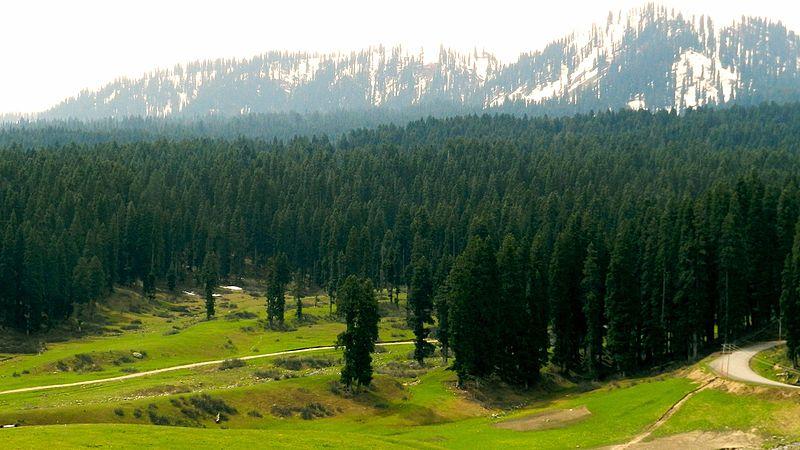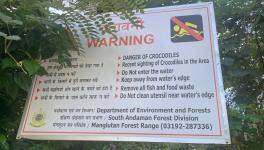Forest Regulatory Regime to be ‘Diluted to Benefit’ Industrial Houses

New Delhi: The Centre’s sudden interest in amending rules governing the forestry sector has been criticised for its apparent bid to favour corporate entities and the potential to cause irreversible damage to the environment and rob some of the most marginalised sections of their rights.
The Union Ministry of Environment, Forest and Climate Change (MoEF&CC) announced the constitution of a 19-member task force on 31 March that will review and analyse the proposed amendments to the Forest (Conservation) Act (FCA), 1980, and the National Forest Policy (NFP), 1988, lying in cold storage for more than four years.
A major objective of the task force, as per the memorandum released by the ministry, will be to recommend measures “to develop synergies for promotion of sustainable development and management of forests and trees outside forests”.
The fact that the task force has additionally been mandated to review the amendments to the NFP—criticised at the time of its release in March 2018 for their impetus on public-private partnership in the management of forest resources—has made it even more apparent that the entire exercise is an attempt to help the corporate sector profit at the cost of tribal and other traditional communities dependent on natural resources for livelihood.
“The latest memorandum released by the ministry also, surprisingly, mentions a National Forest Policy, 2021, which is not in the public domain. No public comments were ever invited for any proposed policy document,” Odisha-based independent researcher Tushar Dash told Newsclick.
Terming the task force’s proposed mandate to develop synergies in forest policies and regulatory regimes very “sweeping”, Dash said, “It raises serious concerns about the implication of this exercise on the forest rights of local communities guaranteed under the Scheduled Tribes and other Traditional Forest Dwellers (Recognition of Forest Rights) Act, 2006, or PESA Provisions of the Panchayats (Extension to Scheduled Areas) Act, 1996.”
The provisions of the proposed NFP have also been called out by the Union ministry of tribal affairs for their apparent thrust on increased privatisation, industrialisation and diversion of forest resources for commercial purposes. In a letter sent to the environment ministry, the tribal affairs ministry pointed out how public-private partnership models for afforestation and agroforestry would open up areas over which tribals and forest dwellers have legal rights.
The term “trees and forests outside forests”—over which the Union government has apparently sought to undertake sustainable development—generally notifies areas considered as “deemed forests” in various states.
Before December 1996, the FCA provisions were applicable only to forests that were either notified under the Indian Forest Act, 1927, or any other local law. Earlier, the provisions of the Act—having its main thrust on conserving and preserving forests resources for the basic needs of local communities—were also applicable to forests under the management control of forest departments of states and Union Territories.
However, the applicability of the Act was extended to various other areas following an order issued on December 12, 1996, by a Division Bench of the Supreme Court comprising Justices Jagdish Sharan Verma and Bhupinder Nath Kirpal in the landmark case TN Godavarman Thirumulpad vs Union of India and Others.
Thenceforth, all areas recorded as ‘forest’ in any government record irrespective of ownership, recognition and classification came under the FCA’s purview. The order also brought areas confirming to the dictionary meaning of the term ‘forest’ under the Act’s purview. Areas identified as ‘forests’ by the expert committee constituted in pursuance of the court order were also covered by the Act. Importantly, the order had also been interpreted in the past to presume that the FCA is also applicable to plantations in non-forest land.
The enactment of Forest Rights Act, 2006, extended rights of individuals and communities dependent on forest resources to those areas too identified as forests following the court order. Prior consent of Gram Sabhas is compulsory before diverting any forest area to industrial purposes.
The task force will also review the proposed amendments to the FCA that were severely criticised in the public domain during consultations last year. By the Narendra Modi government’s own admission in Parliament in the last week of March, more than 5,600 comments have been received in response to the draft amendments.
Incidentally, a primary provision in the set of proposed FCA amendments was to remove “ambiguity” on forest rights created over areas identified as “forests” on the basis of the court order.
The draft consultative paper on amendments to the FCA released last October—which will also be analysed by the task force—famously stated in respect of lands identified as forests by the virtue of the Court order: “Identification of such land is subjective and arbitrary to some extent. This leads to ambiguity and has been observed to be resulting into lot of resentment and resistance, particularly from private individuals and organisations.”
Civil society and conservationists argue that a separate policy is needed to keep commercial plantations out of the purview of the FCA.
“The Union government should frame a policy for prospectively identifying and notifying privately owned vacant lands intended to be used for commercial plantations. This process should be transparent and should include geotagged high-resolution photographs and satellite imageries of such plots along with ownership details,” Debi Goenka of Mumbai-based environmental organisation Conservation Action Trust, told Newsclick.
More than 25 years after the court order, neither there is uniformity across states in identification of deemed forests nor transparency in its status. The urgency to update land records to accurately record forest lands as forests, including “deemed” forests identified by state governments, has been flagged by conservationists time and again.
“The arbitrariness and subjectivity in identifying forest lands can be reduced if the government defines the term ‘forest’. Why this exercise is pending for so many years?” asked Goenka.
The task force comprises only serving or retired bureaucrats except for a couple of independent members and a lawyer. Though the ministry has granted freedom to the task force to co-opt any member, not a single representative from the two biodiversity hotspots of the Western Ghats and the Northeast have been included.
The writer is an independent journalist.
Get the latest reports & analysis with people's perspective on Protests, movements & deep analytical videos, discussions of the current affairs in your Telegram app. Subscribe to NewsClick's Telegram channel & get Real-Time updates on stories, as they get published on our website.
























